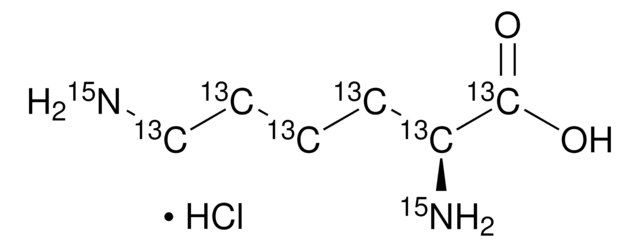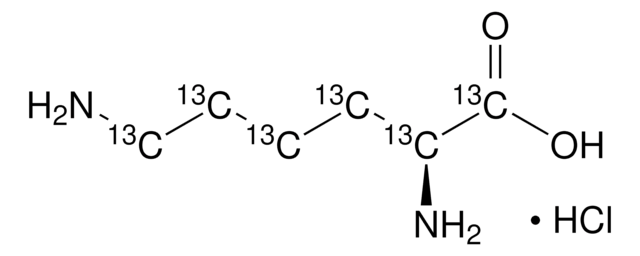D9443
Dulbecco′s Modified Eagle′s Medium - low glucose
liquid, sterile-filtered, suitable for cell culture, designed for isotope labeling in cell culture applications
Produzione farmaceutica
Sinonimo/i:
DME, DMEM
About This Item
Prodotti consigliati
Descrizione
With 1000mg/L D-glucose, L-glutamine, and sodium bicarbonate. Without arginine, leucine, lysine, sodium pyruvate, and phenol red
Livello qualitativo
Sterilità
sterile-filtered
Stato
liquid
tecniche
cell culture | mammalian: suitable
Impurezze
endotoxin, tested
Componenti
NaHCO3: 3.7 g/L
sodium pyruvate: no
glucose: 1.0 g/L
L-glutamine: 0.584 g/L
phenol red: no
HEPES: no
Condizioni di spedizione
ambient
Temperatura di conservazione
2-8°C
Cerchi prodotti simili? Visita Guida al confronto tra prodotti
Ricostituzione
Supplement with 0.100 g/L L-Arginine-13C6, 15N4 HCl (Product 608033), 0.100 g/L L-Leucine-13C6, 15N (Product 608068), and 0.100 g/L L-Lysine-13C6, 15N2 (Product 608041).
Comunemente ordinati con questo prodotto
Codice della classe di stoccaggio
10 - Combustible liquids
Classe di pericolosità dell'acqua (WGK)
WGK 3
Punto d’infiammabilità (°F)
Not applicable
Punto d’infiammabilità (°C)
Not applicable
Scegli una delle versioni più recenti:
Possiedi già questo prodotto?
I documenti relativi ai prodotti acquistati recentemente sono disponibili nell’Archivio dei documenti.
I clienti hanno visto anche
Il team dei nostri ricercatori vanta grande esperienza in tutte le aree della ricerca quali Life Science, scienza dei materiali, sintesi chimica, cromatografia, discipline analitiche, ecc..
Contatta l'Assistenza Tecnica.






